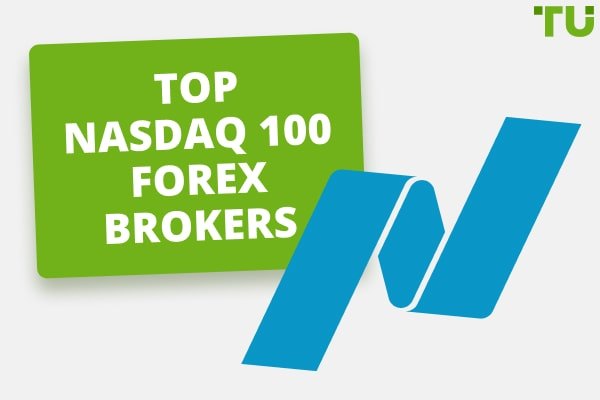Forex Risk Management Models
The main risk management models in Forex are divided into quantitative and qualitative. Qualitative ones involve the use of technical and fundamental analysis tools. Quantitative - stop management, capital distribution, position volume calculation.
Risk management is one of the most important aspects of trading. It helps traders minimize losses and maximize profits. There are many different risk management models, each with its own advantages and disadvantages.
Types of Risk Management Models
Risk management models can be divided into two main categories:
-
Quantitative models are based on mathematical calculations and statistical data. They allow traders to determine the probability of certain events and estimate potential losses. Quantitative risk management models include:
-
Stop-loss method defines at what price level the position should be closed at a loss
-
Risk management method defines what portion of the deposit the trader can use for each trade
-
Capital management method defines how to allocate funds between different trades
-
-
Qualitative models are based on the trader's experience and intuition. They allow traders to assess the situation on the market and make a decision about whether to open a trade. Qualitative risk management models include:
-
Fundamental analysis allows you to assess the state of the economy and individual companies
-
Technical analysis allows you to assess the behavior of the price in the past and predict its future movement
-
Quantitative Risk Management Models
Quantitative risk management models are the most common. They are easy to use and allow traders to objectively assess risks. However, these models may not always be accurate, as they are based on assumptions about market behavior.
Stop-loss method
The stop-loss method is the simplest and most common risk management model. It defines at what price level the position should be closed at a loss. A stop-loss helps traders limit their losses in the event of an unfavorable turn of events.
A stop-loss order is placed by the trader when opening a trade. It can be placed at a fixed amount of money or as a percentage of the position size. For example, if a trader opens a position for $1,000 and their stop-loss is $50, then the position will be closed at a loss if the price reaches $950.
A stop-loss is an important risk management tool, but using it does not guarantee profitable trades. A stop-loss can be triggered even if the trader was right in their market assessment. However, a stop-loss helps limit losses in the event of an unfavorable turn of events.
Risk management method
The risk management method defines what portion of the deposit the trader can use for each trade. This allows traders to control their risks and not lose the entire deposit in the event of a failed trade.
The risk management method is usually expressed as a percentage of the deposit that the trader is willing to lose in the event of a failed trade. For example, if a trader uses a risk management method of 2%, then they can open a trade for no more than 2% of their deposit.
The risk management method is more complex than the stop-loss method. It requires the trader to more carefully assess their financial capabilities and risk.
Capital management method
The capital management method defines how to allocate funds between different trades. This allows traders to diversify their risks and reduce the likelihood of large losses.
The capital management method is usually expressed as a percentage of the deposit that the trader allocates for each trade. For example, if a trader uses a capital management method of 5%, then they can open simultaneously 20 trades for $50 each.
The capital management method is even more complex than the risk management method. It requires the trader to more carefully plan their actions.
Qualitative Risk Management Models
Qualitative risk management models allow traders to take into account factors that cannot be quantitatively measured. These models can be more accurate than quantitative models, but they also require more experience and intuition from the trader.
Fundamental analysis
Fundamental analysis is a method of assessing the value of an asset by studying economic, political, and other external factors that can affect its price.
When conducting fundamental analysis, traders consider factors such as:
-
Economic indicators, such as GDP growth, inflation rate, interest rates, etc
-
Political events, such as elections, changes in legislation, etc
-
Financial results of companies, such as revenue, profit, price-to-earnings ratio, etc
Fundamental analysis can be complex and time-consuming, but it can provide traders with valuable information about how asset prices might develop in the future.
Technical analysis
Technical analysis is a method of assessing the value of an asset by studying its past behavior.
When conducting technical analysis, traders use various tools, such as price charts, indicators, etc., to identify patterns in the behavior of an asset's price.
The basic principles of technical analysis are as follows:
-
Price reflects everything - everything that happens in the market is reflected in the price of an asset
-
History repeats itself - patterns in the past behavior of price can repeat themselves in the future
Technical analysis can be simple and straightforward, but it can also be complex and confusing. To use technical analysis successfully, traders need to have a good understanding of its principles and tools.
Best Forex brokers


Correlational Risk Management Models
Correlational risk management is a risk management model that uses correlation between assets to diversify a portfolio and reduce risk.
Correlation is a statistical relationship between two variables. In the case of correlational risk management, the variables are asset prices. If two assets have a high correlation, then their prices tend to move in the same direction. For example, if stocks of companies in the same sector have a high correlation, then their prices tend to rise or fall together.
Portfolio diversification means distributing capital across different assets. Diversification helps to reduce risk because reducing the share of one asset in the portfolio leads to a reduction in the risk associated with that asset.
Correlational risk management uses correlation between assets to diversify a portfolio. A trader selects assets with low or negative correlation to reduce the risk associated with the portfolio as a whole. For example, a trader may open positions in stocks of companies from different sectors to reduce the risk associated with the overall state of the economy.
Correlational risk management can be an effective tool for reducing risk. However, it is important to note that correlation between assets can change over time. Therefore, traders should regularly review their portfolio to ensure that it remains diversified.
Choosing a Risk Management Model
When choosing a risk management model, the trader should consider their experience, trading style, and financial capabilities. If the trader is a beginner, then it is better for them to use simple quantitative models, such as the stop-loss method. Experienced traders can use more complex models, such as the risk management method or capital management.
In addition to the models mentioned above, there are also a number of other risk management techniques that traders can use. These include:
-
Diversification is the practice of spreading risk across multiple assets or trading strategies. This can help to reduce the overall risk of a trader's portfolio
-
Position sizing is the practice of determining how much of a trader's capital to allocate to each trade. This is an important consideration for risk management, as it can help to limit losses in the event of a failed trade
-
Mental discipline is essential for effective risk management. Traders need to be able to stick to their risk management plan, even when they are tempted to deviate from it
By using a combination of risk management models and techniques, traders can help to protect their capital and maximize their profits.
Conclusion
Risk management is an integral part of trading. It helps traders minimize losses and maximize profits. There are many different risk management models, each with its own advantages and disadvantages. When choosing a risk management model, the trader should consider their experience, trading style, and financial capabilities.
FAQs
What is risk management?
Risk management is the process of identifying, assessing, and controlling risks to minimize their potential impact. It involves developing strategies to prevent or mitigate potential losses and protect assets.
What is the best risk management strategy in forex?
The best risk management strategy in forex depends on the individual trader's risk tolerance, trading style, and financial capabilities. However, some general principles include:
-
Diversification: Diversifying your portfolio across different currencies and trading strategies can reduce overall risk
-
Position sizing: Limiting the size of your trades can help prevent excessive losses
-
Use of stop-loss orders: Stop-loss orders automatically close a trade when it reaches a predetermined loss level, limiting potential losses
What are the three types of forex risks?
The three main types of forex risks are:
-
Market risk: The risk of adverse price movements in the forex market
-
Liquidity risk: The risk of not being able to enter or exit a trade at a desired price due to lack of liquidity
-
Counterparty risk: The risk of loss due to the failure of a counterparty, such as a broker, to fulfill their obligations
What is the most common risk management model?
The most common risk management model in forex is the stop-loss order. A stop-loss order is an instruction to a broker to automatically sell an asset when it reaches a certain price level, limiting potential losses. Other common risk management models include diversification and position sizing.
Glossary for novice traders
-
1
Broker
A broker is a legal entity or individual that performs as an intermediary when making trades in the financial markets. Private investors cannot trade without a broker, since only brokers can execute trades on the exchanges.
-
2
Risk Management
Risk management is a risk management model that involves controlling potential losses while maximizing profits. The main risk management tools are stop loss, take profit, calculation of position volume taking into account leverage and pip value.
-
3
Trading
Trading involves the act of buying and selling financial assets like stocks, currencies, or commodities with the intention of profiting from market price fluctuations. Traders employ various strategies, analysis techniques, and risk management practices to make informed decisions and optimize their chances of success in the financial markets.
-
4
Diversification
Diversification is an investment strategy that involves spreading investments across different asset classes, industries, and geographic regions to reduce overall risk.
-
5
Fundamental Analysis
Fundamental analysis is a method or tool that investors use that seeks to determine the intrinsic value of a security by examining economic and financial factors. It considers macroeconomic factors such as the state of the economy and industry conditions.
Team that worked on the article
Alex Smith is a professional day trader for a proprietary trading firm within the foreign exchange (forex) and crypto markets. His area of expertise is day trading and swing trading within the 15min-4hr time frames for both the London and NY open.
Dr. BJ Johnson is a PhD in English Language and an editor with over 15 years of experience. He earned his degree in English Language in the U.S and the UK. In 2020, Dr. Johnson joined the Traders Union team. Since then, he has created over 100 exclusive articles and edited over 300 articles of other authors.
Mirjan Hipolito is a journalist and news editor at Traders Union. She is an expert crypto writer with five years of experience in the financial markets. Her specialties are daily market news, price predictions, and Initial Coin Offerings (ICO).









